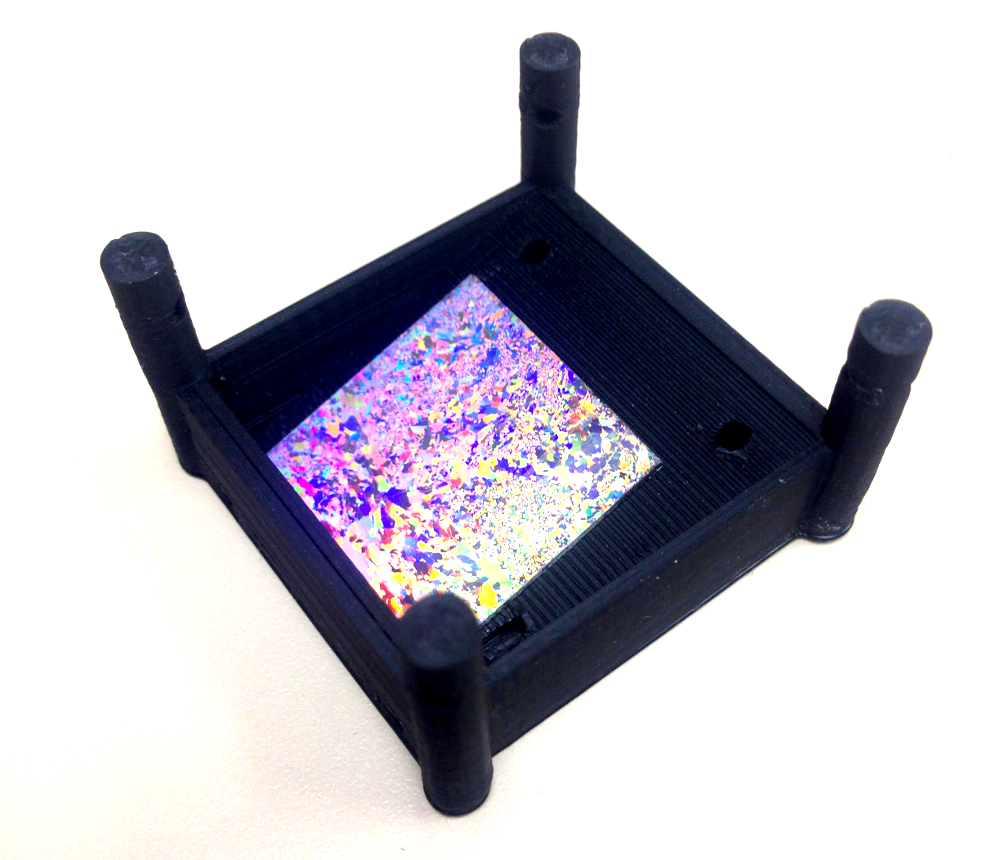J.M.Pearce (talk | contribs) m (→See Also) |
J.M.Pearce (talk | contribs) m (→Methods) |
||
| Line 20: | Line 20: | ||
* A surfactant-free approach for interface coating is developed to fabricate zero-contamination colloidal films. | * A surfactant-free approach for interface coating is developed to fabricate zero-contamination colloidal films. | ||
* Each of the methods reaches an overall coverage of more than 90% and can be used for nanosphere lithography to form plasmonic metamaterials. | * Each of the methods reaches an overall coverage of more than 90% and can be used for nanosphere lithography to form plasmonic metamaterials. | ||
==Keywords== | |||
microsphere lithography; plasmonic; nanosphere lithography; dip coating; spin coating; nanosphere; plasmonic; [[metamaterial]]; [[photovoltaic]]; synthesis | |||
==Methods== | ==Methods== | ||
Revision as of 10:38, 20 July 2017

Source
- 1. Chenlong Zhang, Sandra Cvetanovic, Joshua M. Pearce. Fabricating Ordered 2-D Nano-Structured Arrays Using Nanosphere Lithography. MethodsX (in press). DOI:10.1016/j.mex.[ open access]
Abstract
Template:Statusboxtop Template:Status-design Template:Status-model Template:Status-prototype Template:Status-verified You can help Appropedia by contributing to the next step in this OSAT's status. Template:Boxbottom
Recent advances in the use of plasmonic metamaterials to improve absorption of light in thin-film solar photovoltaic devices has created a demand for a scalable method of patterning large areas with metal nanostructures deposited in an ordered array. This article describes two methods of fabricating ordered 2D nanosphere colloidal films: spin coating and interface coating. The two methods are compared and parameter optimization discussed. The study reveals that:
- For smaller nanosphere sizes, spin coating is more favorable, while for larger nanospheres, the angled interface coating provides more coverage and uniformity.
- A surfactant-free approach for interface coating is developed to fabricate zero-contamination colloidal films.
- Each of the methods reaches an overall coverage of more than 90% and can be used for nanosphere lithography to form plasmonic metamaterials.
Keywords
microsphere lithography; plasmonic; nanosphere lithography; dip coating; spin coating; nanosphere; plasmonic; metamaterial; photovoltaic; synthesis
Methods
Detailed methods in the paper - also supported by:
See Also
- Plasmonic enhancement of amorphous silicon solar photovoltaic cells with hexagonal silver arrays made with nanosphere lithography
- A new method of preparing highly conductive ultra-thin indium tin oxide for plasmonic-enhanced thin film solar photovoltaic devices
- Limitations of ultra-thin transparent conducting oxides for integration into plasmonic-enhanced thin-film solar photovoltaic devices
- Influence of Oxygen Concentration on the Performance of Ultra-Thin RF Magnetron Sputter Deposited Indium Tin Oxide Films as a Top Electrode for Photovoltaic Devices
- Advances in plasmonic light trapping in thin-film solar photovoltaic devices
- Controlling optical absorption in metamaterial absorbers for plasmonic solar cells
- Plasmonic Perfect Meta-Absobers for a-Si PV Devices
- Multi-resonant silver nano-disk patterned thin film hydrogenated amorphous silicon solar cells for Staebler-Wronski effect compensation
- Enhancement of hydrogenated amorphous silicon solar cells with front-surface hexagonal plasmonic arrays from nanoscale lithography





